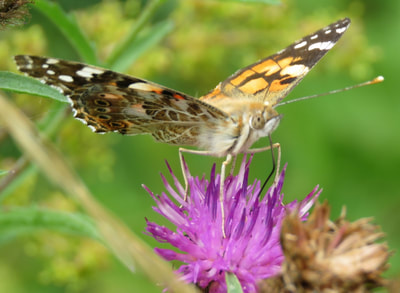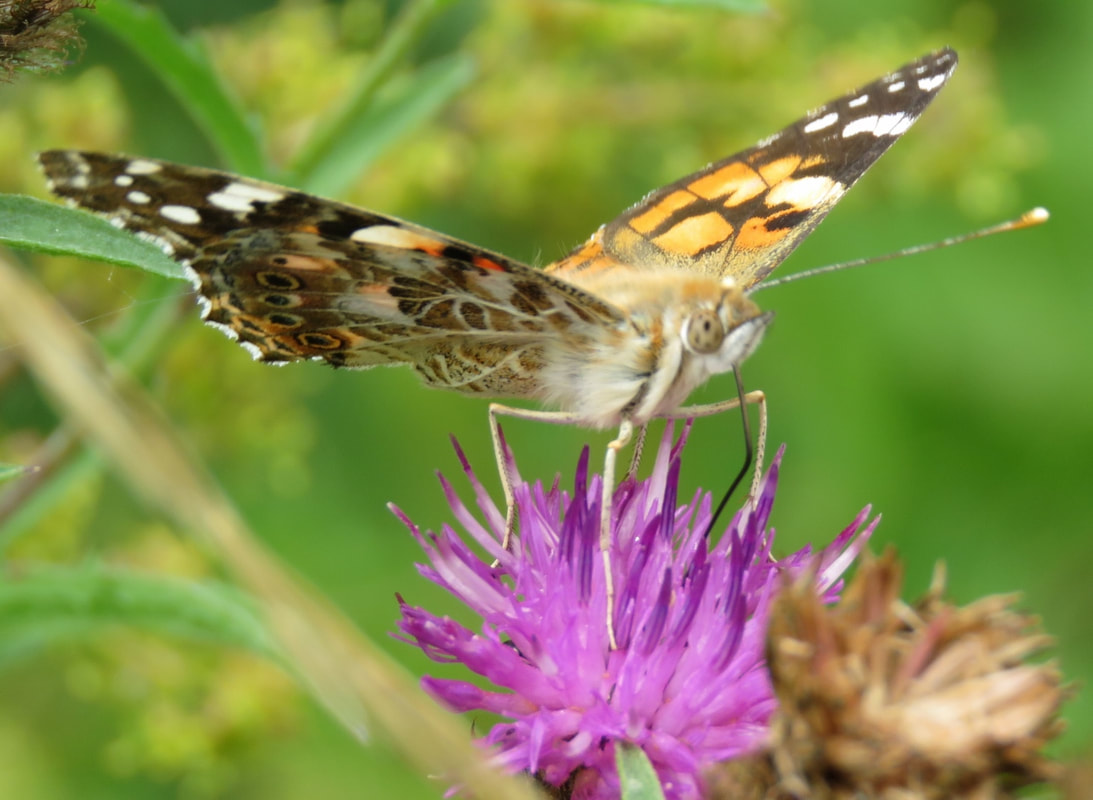 Painted lady on knapweed
Painted lady on knapweed Painted ladies showed well at Smardale. Knapweed and scabious were the nectaring plants for most species we saw today: small copper, peacock, tortoiseshell, green-veined white, small heath and hummingbird hawkmoths. And numbers of Scotch Argus.
Scotch Argus: Erebia Aethiops its latin name evokes the rich dark colour of the upper-wings. A large and thriving population of Scotch Argus at Smardale is dependent on blue moor grass which flowers late April on limestone grassland grazed only in winter. In Scotland, the Scotch Argus favours the taller purple moor grass of acid moorland. Once we reached the zone of blue moor grass we began to find them. Chris Winnick showed us their core habitat where Scotch Argus breed in profusion. Our best sightings occur on the stretch of dismantled railway overlooking Smardale packhorse bridge, past the double limekiln and as we reach Smardalegill viaduct. Scotch Argus is a Smardale special, high on our list of target-species.
There are yellow rattle seed-heads and flowers of eyebright, hemi-parasitic plants which tap into grasses, seeking their nutrients, sapping their vigour and so increasing the diversity of the Smardale flora.
An abundance of seeds on embankment and hedgerow attracted flocks of linnet and goldfinch. Willow warbler were audible with contact calls as they prepare to migrate. Swallows wove above our track all day. A twittering hawthorn stopped us in our tracks.














 RSS Feed
RSS Feed